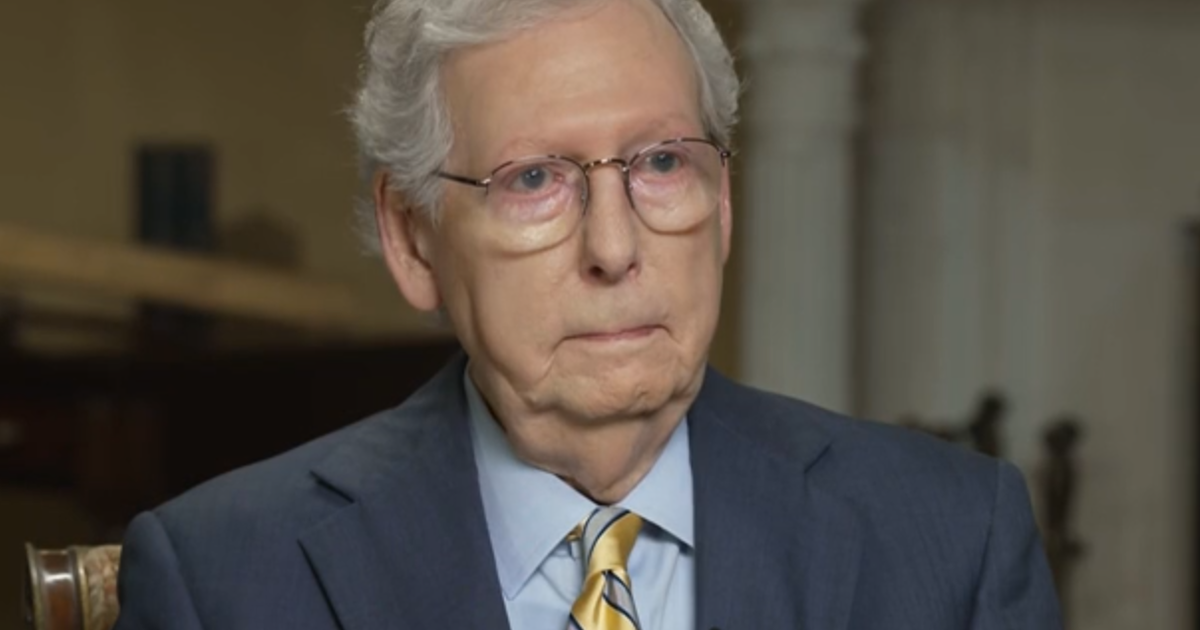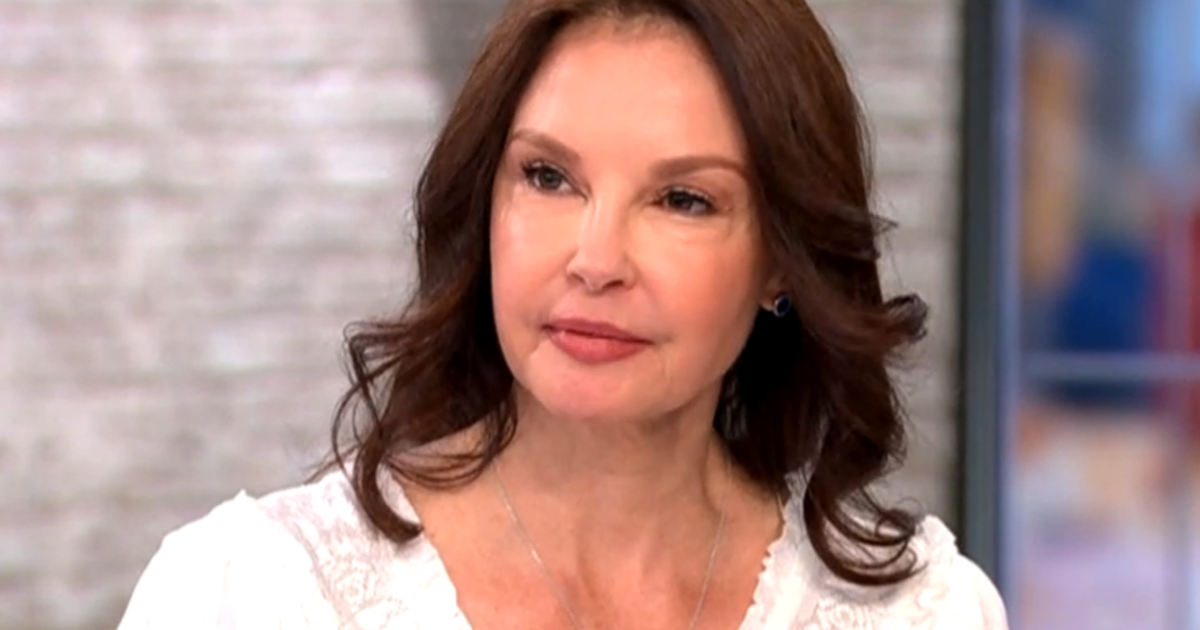Transcript: Scott Gottlieb discusses coronavirus on "Face the Nation," July 12, 2020
The following is a transcript of an interview with former FDA Commissioner Scott Gottlieb by CBS News' Margaret Brennan that aired Sunday, July 12, 2020, on "Face the Nation."
MARGARET BRENNAN: We go now to Westport, Connecticut, and former FDA commissioner Dr. Scott Gottlieb. Good morning to you.
DR. SCOTT GOTTLIEB: Good morning.
MARGARET BRENNAN: Last Sunday, when you were with us, you said we had four major epicenters of spread, and you predicted we would get to about 60,000 infections a day. That's right about where we've been for the past at least three days. You said within two weeks we'd be a thousand infections a day, excuse me, a thousand deaths a day. What do we need to be prepared for next?
DR. GOTTLIEB: Well, look, I think things are going to get worse before they get better. There's some private modelling floating around that shows that this is possibly going to peak in the next two or three weeks. You see Google mobility data and OpenTable reservations starting to decline in these Southern states where these dense epidemics are happening, which is an indication that consumers are pulling back. And that's going to create somewhat of a backstop. But I think what you're likely to see in the South, which is different than New York, New York, really followed the pattern of Italy, where it was a sharp up, a huge epidemic, but it came down rapidly. I think in the South you're likely to see an extended plateau. We really don't have a national approach here. What we have is state approaches that are creating regional effects. And so those regional effects are different. And the New York experience mirrored Italy. I think the Southern experience is more likely to mirror Brazil, where you're likely to see more of an extended plateau once we reach that apex. And you could reach the apex in the next two or three weeks.
MARGARET BRENNAN: The next two to three weeks, that- which is the same time frame the surgeon general referenced there. But when we talked to you throughout this pandemic, you had been warning, take New York as a lesson on what you need to be doing. It was a message to other governors for PPE, for preparing to get ahead of this. Why do the Southern and Western states not appear to be prepared?
DR. GOTTLIEB: Well, look, I think that they felt they were out of the woods after that first wave passed, but this has really been a regional experience in the United States. And what happened was they reopened against the backdrop of what was a lot of spread. They hadn't really crushed--
MARGARET BRENNAN: Too early?
DR. GOTTLIEB: --the virus in those states and people became-- too early, in my view, and people became complacent, especially younger people. They were going out, not taking precautions. Older people were taking precautions. They were protecting the nursing homes and the vulnerable. But inevitably, what happens is if the younger people go out and get infected, because they're not taking those precautions, it's going to get back into a more vulnerable population. And that's what we're seeing right now. You're seeing rising cases in nursing homes. Positivity in these states is actually declining in the younger population, but rising in the older population. And if you want sort of a proxy for that experience, you look at Iran. Iran had a major epidemic. It came way down. They had a second peak. It was mostly in younger people. They said, don't worry, it's younger people so we're not going to see the same level of deaths. But eventually the infection seeped into an older population. That's what's happening now. You're starting to see more outbreaks in nursing homes. So tragically, we're going to see deaths start to rise. And that's why I said in two to three weeks until you see deaths get back above a thousand.
MARGARET BRENNAN: You've spoken before about this question of whether the virus is spread through aerosol transmission. And now we know the World Health Organization is looking at it. Should offices and schools be changing their filtration systems?
DR. GOTTLIEB: I think this is something they should look at. Remember, it's not binary. It's not either airborne or droplet transmission. This could be spread primarily through droplet transmission, but in certain settings that are very conducive to respiratory spread, you'd get something that approximates airborne transmission. And what- what are those conditions? It's enclosed spaces, spaces with recirculating air, air conditioned spaces where it's cooler and it's more conducive to spread. So in optimal conditions indoors, you might get the kind of spread patterns that approximate airborne transmission. And in those settings, we should be thinking about trying to improve conditions, putting in HEPA filters, putting in UV light in the air conditioning systems. I think these are things you should be looking at. And, in fact, many businesses are doing that. They are looking at retrofitting, you know, air conditioning systems. In some cases, it's not very expensive to do that. In other cases, it might be more expensive.
MARGARET BRENNAN: Well, perhaps that's something we should ask about with schools. The education secretary on another network said this morning that there is a lot of data to suggest that kids are not spreaders of COVID-19. She was talking about putting kids back physically in a classroom five days a week. In your medical opinion, is that data definitive and- and is it convincing?
DR. GOTTLIEB: Well, look, the data isn't definitive, but it's certainly suggestive. And what we've learned from this virus is it has surprised us. It has both- we've both underestimated and overestimated it at the same time. So we need to be prudent. I think it's important to give discretion to local districts to take steps to try to de-densify schools and protect kids so we don't have outbreaks. Everyone should be working to reopen the schools. It's critical. And when I talk to Republican and Democratic governors, they're in fact doing that. But I think districts need discretion to try to put in place measures to keep kids safe. No other country, with the exception maybe of Sweden, reopened their schools or kept their schools open against the backdrop of so much spread that we're attempting to do in this country. So we do face a unique risk. And while the balance of the data shows that kids are less susceptible to infection and less likely to transmit it, less susceptible doesn't mean they're not susceptible. And sometimes- some of the studies show that they can compensate for their decline in susceptibility by their propensity to spread infection, by their behaviors that are more likely to propagate infection. And one final point here. You know, if we look at the 2018-2019 flu season, 11.3 million kids became symptomatic from flu that season. There were 480 tragic deaths. We have not seen 11.3 million kids get symptomatic COVID yet because we've largely sheltered the children. And we don't want to see it. We've got to take measures to make sure it doesn't become epidemic in children in the same way that flu becomes epidemic in children, because we don't know what the impacts are going to be on kids. Right now, the kids have been sheltered. I would guess that the infection rates among children--
MARGARET BRENNAN: OK.
DR. GOTTLIEB: --has been relatively low in this country.
MARGARET BRENNAN: All right. We're definitely gonna talk to you again about that. As you said, we just- we don't know with kids. So it's something we'll be tracking as the science develops. We'll be right back with a look at the challenge faced by working parents of young children. Childcare.



